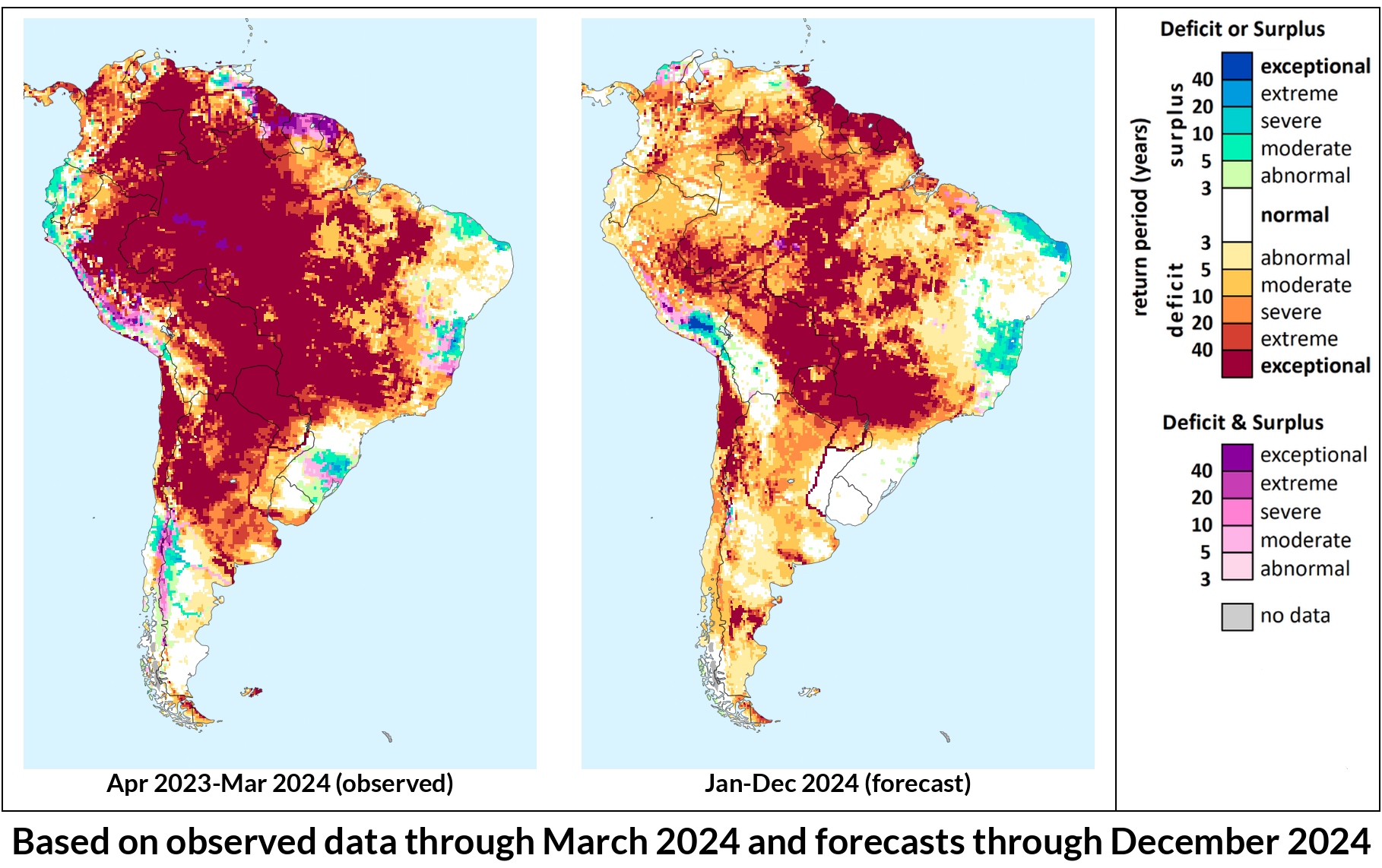Brazil’s Extreme Drought Disrupts Agricultural Exports and Strains Supply Chains

Brazil's ongoing extreme drought is having profound effects on both the environment and its crucial agricultural industry, creating significant bottlenecks in the nation's supply chains, particularly for grains like soybeans and corn. The drought, which began last year, has caused major tributaries of the Amazon River to drop to record-low levels, impacting water transportation routes essential for moving agricultural products to export markets.
Extent of the Drought
The drought in Brazil affects nearly 60% of the country, with some cities, including the capital Brasília, experiencing over 140 consecutive days without rain. This represents the worst drought since 1950, according to Cemaden, Brazil's national disaster monitoring center. The drought has hit the Amazon River Basin particularly hard, where rivers like the Madeira and Tapajos, critical to Brazil's agricultural export infrastructure, have seen their water levels drop to commercially unfeasible levels. For example, the Madeira River, which is integral to transporting grains from the agricultural heartlands of Rondonia and Mato Grosso, is only about two meters deep in some areas — far too shallow for the large barges that navigate it.
Figure 1. Madeira River

Impact on Agricultural Exports
Brazil is the world's largest exporter of soybeans and one of the top corn exporters.Much of this produce is shipped from the country's northern ports, which rely on rivers like the Madeira and Tapajos. In 2023, 34% of Brazil's soybean exports and nearly 43% of its corn exports were shipped through the "North Arc" region, including ports along the Amazon River and its tributaries. These waterways have become vital to the country's export strategy, particularly as exporters increasingly shift their operations from southern ports to northern ones to reduce shipping times and costs.
However, transportation has come to a halt, with river levels so low. The Brazilian port terminal association Amport, which represents key multinational grain traders like Cargill and Louis Dreyfus, reported that grain shipments on both the Madeira and Tapajos rivers have been suspended due to the lack of navigable water. In the case of the Tapajos, navigation has been halted since early Oct-24 and is expected to resume only in Nov-24 if rains arrive as forecasted. According to Amport,, river levels need to rise by at least 20 centimeters (7.9 inches) for the waterways to reopen.
Financial and Logistical Ramifications
While Brazil's grain exports are unlikely to decrease drastically this year due to the shipping delays, the drought has still created financial and logistical headaches for exporters and farmers alike. According to the National Association of Grain Exporters (ANEC), most grains intended for 2024 export have already been shipped, so overall export volumes are not expected to decline. However, the closure of northern shipping routes has forced some exporters to rely more on southern ports, which increases logistical costs. Shipping through southern ports is more time-consuming and expensive, adding to the financial strain on traders and farmers.
For farmers, particularly those in the central and northern agricultural zones, the drought has also exacerbated existing difficulties. The lack of water has not only hampered transportation but also affected crop yields, as drought conditions and high temperatures limit the growth and development of crops. Additionally, the logistical delays mean that farmers are experiencing longer waiting times for payments, as exporters are unable to move their products as efficiently as usual.
Figure 2. South American Water Anomalies Forecast (Apr-23 to Dec-24)

Long-Term Concerns
The long-term effects of the drought raise concerns not just for the current year but for the future of Brazil’s agricultural and export sectors. Prolonged droughts, driven by climate change, are becoming a more frequent occurrence in Brazil. This is particularly worrisome for the northern region, which has become a vital link in Brazil’s export chain, handling an increasing share of the country's grain shipments in recent years.
There are also broader environmental and social implications tied to the drought. The reduced water levels in the Amazon and its tributaries are impacting local communities that rely on the rivers for transportation, fishing, and agriculture. Additionally, the Amazon rainforest itself, already under pressure from deforestation and land-use changes, is further threatened by the drying of its rivers, which are critical to its ecosystem.
Government and Industry Response
Given the severity of the situation, the Brazilian government and industry leaders are actively monitoring weather forecasts and river levels. However, their ability to mitigate the impacts of the drought remains limited in the short term. The government has called for more robust infrastructure to support the grain supply chain, including investment in alternative transport routes such as highways and railways. However, these solutions will take time to implement and are unlikely to provide immediate relief.
Meanwhile, exporters are exploring ways to adapt to the changing climate. This includes diversifying shipping methods and increasing the use of southern ports, although these measures are seen as temporary fixes rather than long-term solutions. Companies are also factoring in higher costs as they adjust to the new reality of more frequent droughts and water shortages.
Conclusion
Brazil’s drought is not only a national crisis but a global concern, given the country’s central role in feeding the world with grains like soybeans and corn. The drought-induced disruptions to river transport have already caused financial strain and logistical bottlenecks, even as the bulk of this year’s exports have already left the country. Looking ahead, the likelihood of recurring droughts due to climate change suggests that Brazil’s agricultural sector will need to adapt to an increasingly challenging environment, with further investment in infrastructure and new strategies for coping with extreme weather conditions becoming more critical than ever.




